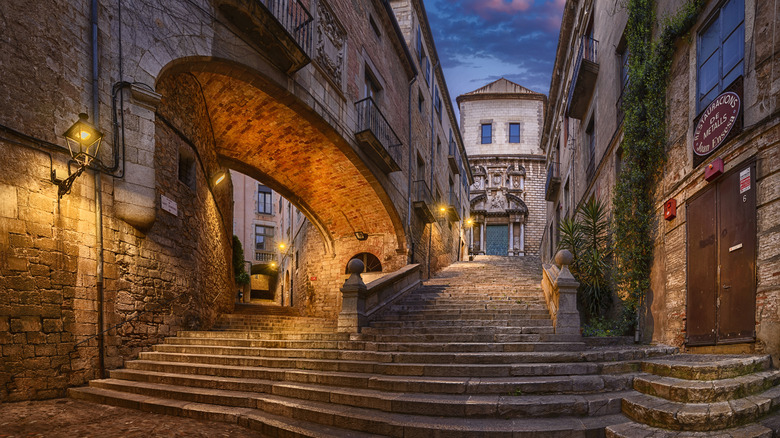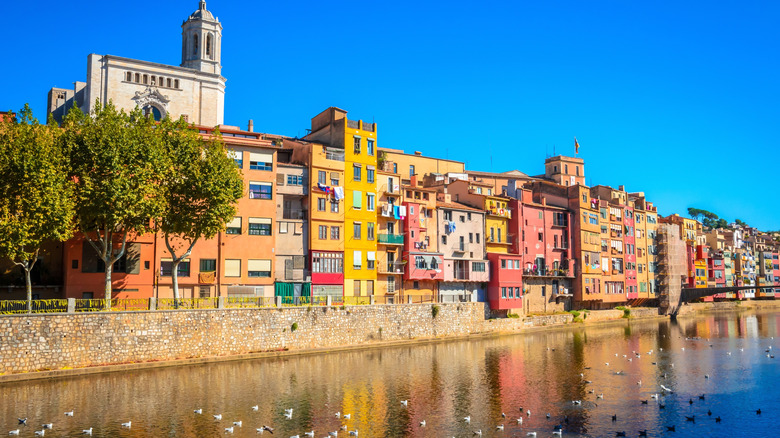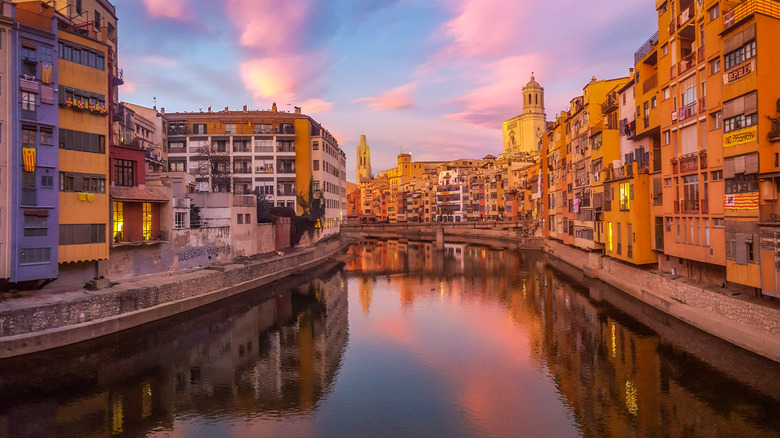A Medieval Town In Spain With Michelin-Star Cuisine Is Known As The 'City Of The Four Rivers'
Right outside of downtown Girona, just beyond the Parc de la Devesa and River Ter, you'll find El Celler de Can Roca, an acclaimed local restaurant. How acclaimed? This location, with its modernist-garden design and entrées like abstract works of art, holds three Michelin stars. The owners, the Roca brothers, are renowned for their kindness and hospitality, as well as their culinary genius. Oh, and it's been rated the single best restaurant in the world, twice.
You might assume that Girona, a Spanish city of about 100,000 people, would revel in these accolades. Three Michelin stars in a modest community 60 miles north of Barcelona? Surely this is some miracle; how could a glorified village, largely known for meat and chemical production, possess such an epicurean touchstone?
Actually, El Celler de Can Roca isn't the only Michelin-rated eatery in the area. There is a trio of Girona restaurants with two Michelin stars, and a full dozen Girona restaurants with one star — itself a major achievement in the hyper-competitive world of fine European dining. In short, Girona is a foodie's paradise, set among four beautiful rivers in the Catalonian countryside. Meats and chemicals aside, Girona is also a tourist hub, drawing millions of tourists to northeastern Spain every year. Not only does travel expert Rick Steves consider Girona one of the best day-trips from Barcelona; some people are traveling to Spain just to stay (and eat) in this splendid Medieval town.
Girona's deep historic roots
The city of Girona dates back to the fifth century BCE, and many empires have made their mark on the city: The Romans controlled it, then the Visigoths, then the Moors and the Franks. Over the past 2,500 years, invaders have laid siege to the city 25 times, including three famous attacks by Napoleon in the early 19th century. Like Barcelona, Medieval Girona had a thriving Jewish quarter, known as El Call, which remains well preserved. Indeed, there are still enduring monuments to Girona's medieval past, such as the protective stone wall first built in the 14th century, and a formidable gothic cathedral on the north side of town.
Part of Girona's appeal was its strategic location. The town stands at the foot of the Los Ángeles Mountains, not far from the current French border. Rivers are always handy for armies and commerce, and four of them run through town, the Ter, Galigants, Honiar, and Guel.
Today, the city is known for its colorful row houses, many of which overlook the rivers, and a wide range of historic architecture. Girona isn't a seaside city, but it's been lassoed into the "Costa Brava," Catalonia's sunny Mediterranean coast. The hills around Girona are a magnet for cyclists, especially gravel bikers. Scenic motorways have helped garner Spain's reputation as the best country in Europe for road trips.
Easy to reach, easier to love
The best part is Girona's accessibility; Barcelona's El Prat is the second busiest Spanish airport, and the city is only 40 minutes away from Girona by train. High-season accommodations can get pricey, typically ranging from $100-200 per night, but the city has at least one hostel as well as rooms and apartments for rent. This part of Spain is beautiful almost any time of year, with mild winters and hot-and-dry summers. Catalonia has struggled with over-tourism lately, so spring and fall are ideal for avoiding crowds.
A stay in Girona puts you about 20 miles away from the Costa Brava's beaches, which is pretty far for a cab ride but just right for a scenic drive in a rental car. You're also a 45-minute drive from one of the weirdest and most wonderful institutions in the region, the Salvador Dalí Theatre and Museum, in the town of Figueres. The surreal collection is housed in a massive brick building and pays homage to one of the 20th century's most imaginative visual artists. This is just one of the many underrated destinations in Spain to add to your bucket list.


